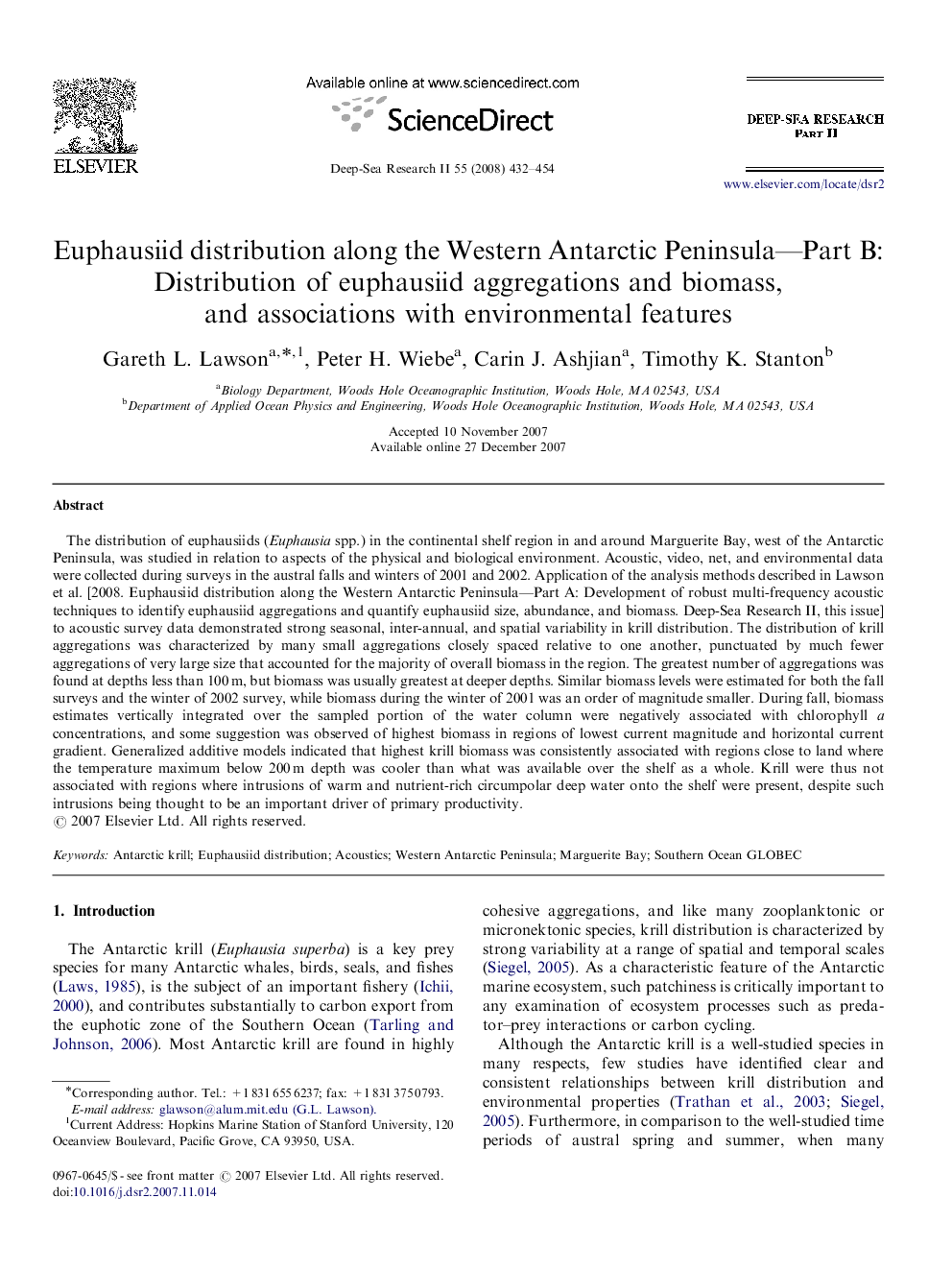| کد مقاله | کد نشریه | سال انتشار | مقاله انگلیسی | نسخه تمام متن |
|---|---|---|---|---|
| 4537491 | 1626498 | 2008 | 23 صفحه PDF | دانلود رایگان |

The distribution of euphausiids (Euphausia spp.) in the continental shelf region in and around Marguerite Bay, west of the Antarctic Peninsula, was studied in relation to aspects of the physical and biological environment. Acoustic, video, net, and environmental data were collected during surveys in the austral falls and winters of 2001 and 2002. Application of the analysis methods described in Lawson et al. [2008. Euphausiid distribution along the Western Antarctic Peninsula—Part A: Development of robust multi-frequency acoustic techniques to identify euphausiid aggregations and quantify euphausiid size, abundance, and biomass. Deep-Sea Research II, this issue] to acoustic survey data demonstrated strong seasonal, inter-annual, and spatial variability in krill distribution. The distribution of krill aggregations was characterized by many small aggregations closely spaced relative to one another, punctuated by much fewer aggregations of very large size that accounted for the majority of overall biomass in the region. The greatest number of aggregations was found at depths less than 100 m, but biomass was usually greatest at deeper depths. Similar biomass levels were estimated for both the fall surveys and the winter of 2002 survey, while biomass during the winter of 2001 was an order of magnitude smaller. During fall, biomass estimates vertically integrated over the sampled portion of the water column were negatively associated with chlorophyll a concentrations, and some suggestion was observed of highest biomass in regions of lowest current magnitude and horizontal current gradient. Generalized additive models indicated that highest krill biomass was consistently associated with regions close to land where the temperature maximum below 200 m depth was cooler than what was available over the shelf as a whole. Krill were thus not associated with regions where intrusions of warm and nutrient-rich circumpolar deep water onto the shelf were present, despite such intrusions being thought to be an important driver of primary productivity.
Journal: Deep Sea Research Part II: Topical Studies in Oceanography - Volume 55, Issues 3–4, February 2008, Pages 432–454